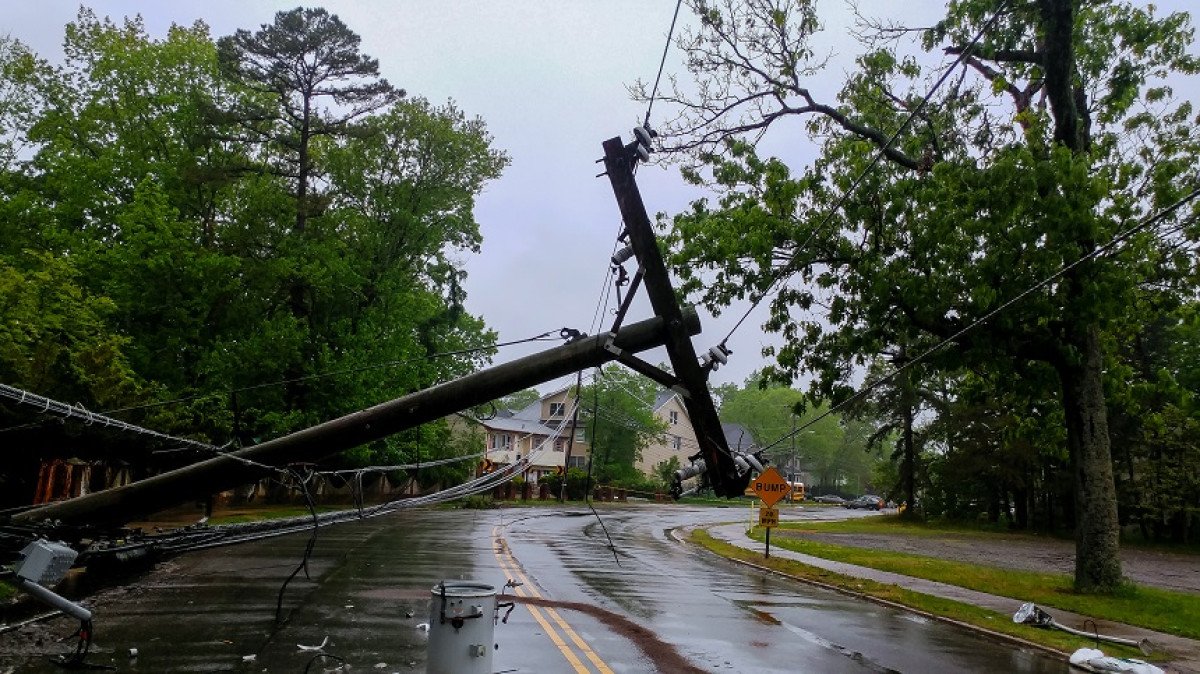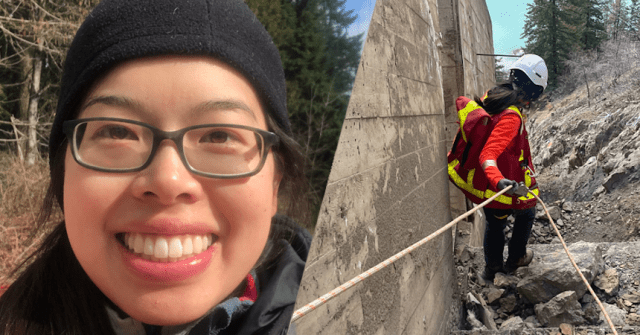A car crash, a power pole, and the spark of inspiration
As an immigrant kid growing up in Vancouver, Poh Tan arrived at school one day to discover that the far-from-perfectly-constructed plane she had handed in to her Grade 7 teacher was now suspended on a wire, as if flying above her class, for all to see.
She shared this story in a 2017 Ted X presentation that detailed how a teacher inspired her to believe in herself and her dreams. And it informs the way Tan – a stem cell biology PhD in the last stage of a second PhD, in science education – helps clients like BC Hydro’s Power Smart for Schools team help teachers inspire students.
We asked Tan for advice on how to best teach high school students about safety in the event of a car hitting a power pole. To start with, she says the lessons should be geared to new drivers, in Grade 10 or older. She says to consider separating some of the science information from the safety information. And inspire the students to create their own video or other messaging, such as a TikTok quiz, a scripted video that uses a popular song, or maybe even a dance, to communicate the key points around car accidents and power poles.
“Teachers are tapping into a lot more mainstream media as part of their lesson,” says Tan, who focuses on STEM (Science, Technology, Engineering, Math) education through her consulting company STEMedge Inc. “They can use things like Taylor Swift songs, popular rap songs, or a recent X post. They can ask students to analyze them. What are the lines in songs leading to? Are there any metaphors in there they can work with?” What does concise but accurate messaging read and feel like.”
Exploring safety messaging that sticks
Students will likely ignore (or at least forget) key messages from a typical utility video. But like a homemade plane suspended above a class, a message about safety that hangs on a popular song, or a fun, visual cue, stands a much better chance of being recalled when it really matters. And while it may be asking a bit too much that it may save a life someday, a student’s social media post stands a decent chance at spreading the word about an important topic.
Let’s start with the key messages:
- Always assume that downed or damaged power lines are live, even if they’re not sparking or making a sound.
- If you can do it safely, drive away from the crash.
- If not, stay put, call 911, and wait for help.
- If you absolutely must get out of the vehicle (e.g. because of a fire), remember you must not touch the vehicle and the ground at the same time with any part of your body or clothing. Carefully jump from the car, land with both feet touching, and shuffle at least 10 metres away with feet always touching one another.
A quick web search unearths a variety of songs, posts, and videos that might somehow relate to the safety topic and/or the messages that need to be conveyed.
Some may be a little on-the-nose, such as the video for singer Jade LeMac’s song Car Accident that features the lyric: ‘You were driving fast in the empty lane/ Spinning out while it was pouring rain’, but it has the power to inspire. Ditto for post-punk band IDLES’ Car Crash, which tightly edits a series of clips of cars out of control.
Students will have their own favourites. Maybe it’s a line or two from a song such as Willow’s Wait a Minute! providing the hook into messaging around calling 911 and waiting for help. Or Billie Eilish’s The 30th, about the aftermath of a car accident (‘What if it happened to you on a different day?/On a bridge, where there wasn't a rail in the way?).
Utility company safety videos don’t often go viral, but there are flashes of brilliance. Consider playing for your class this well-acted dramatization of a car crash into a pole, at the 2:38 mark of an otherwise routine Your License to Live video by a U.S. electric company. Can your students improve on that? Can they do a version for TikTok?
And then there’s dancing. A lot of people have demonstrated on video how to shuffle 10 metres out of danger, including BC Hydro’s own Dave in this Know what to do video. But there may be a way to do that shuffle properly to a soundtrack of something like Men Without Hats’ Safety Dance, or country star Xavier Rudd’s Walk Away. Again, these are just a few examples to get students thinking about the possibilities.
“This approach should be great because it involves minimal preparation for the teacher,” says Tan. “It’s not like they’re making the video. They’re assigning the students to make a creative expression and letting them have the freedom. They can ask ‘How would you teach this important piece of information to your peers, using different types of media that you're familiar with?”
Not all expression needs to be digital, but could use innovative techniques to get the word out. Tan suggests that instead of the go-to of creating a poster for school walls, signs with messaging aimed at new drivers might be posted in a school zone.
How it all links to B.C. curriculum big ideas
The B.C. school curriculum’s Big Ideas guidelines for Grade 10 and 12 English language arts include an emphasis on oral, written, visual, or digital expression to communicate story. In Grades 11 and 12 there’s also an emphasis on differing world views through the likes of oral stories, songs, digital, texts, and advertisements.
“Students in Grades 10, 11 and 12 are learning to communicate to audiences that that they don't know,” says Tan. “They’re learning how to write persuasively, but also accurately. They’re learning how to write in a concise tone, but without sounding boring.”
Tan suggests that teachers use social media posts and ads as writing prompts to create narratives inspired by real-world content. “It enhances their ability to connect with contemporary issues and trends, including safety,” she says. “And interdisciplinary learning can connect creative writing with other subjects.
“For example, students could analyze historical advertisements to understand the context of a particular time. I can remember when, in school, we were taught to hop away [from power lines] instead of shuffling. An interesting analysis would be a look at why this advice would have changed.”
The science of power line safety also lines up nicely with Science for Citizens 11, specifically with Big Ideas around scientific processes and knowledge that informs decisions and impacts our daily lives. A sample question might be: What are the potential dangers of being around downed or damaged power lines? It relates directly to safety advice around staying put in a vehicle, or carefully shuffling away to avoid creating a circuit in your body while touching energized ground.
Activities and resources for safety around power lines
Go to bchydro.com to get the basics on motor vehicle accidents and power lines. Power Smart for Schools activities, lessons, and blog posts offer curriculum-related guidance on numerous topics, including safety. Follow the suggested activities or use the ideas and teaching notes as a launch point into more creative experiences.
Students use storytelling and group work to create a message around preparing for winter storms to share on social media.
Students explore safety situations and create a public service announcement to keep peers safe around electricity.
Students are tested for their understanding of electricity and electrical hazards by completing a true or false quiz and comparing their answers with a partner.
Students use Scratch, a free computer coding platform for students, to code a safety message to help teach others to stay safe.
Students explore the relationship between electricity and personal safety through skits and a slideshow.
Blog post lists 7 things to never do, with explanations of why these actions matter.






